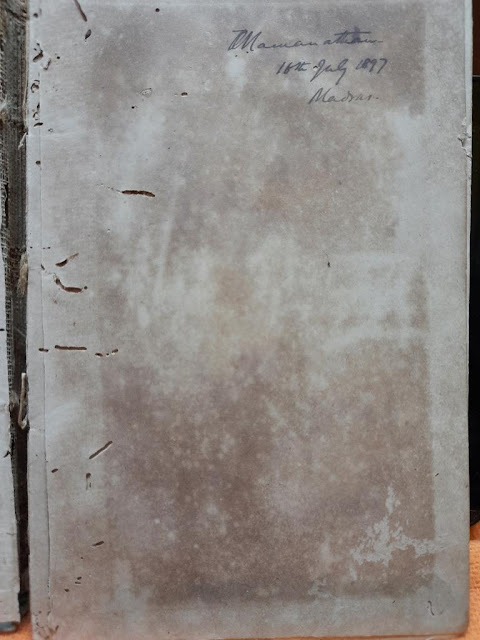Chander is a
History Buff Episode 7
Greeting to my readers.
I am posting my new episode 7 (a book of 96 years old, from my
bookshelf) before episode 6, as the book I am reviewing in episode 6 needs more
exploration, to share with the readers, for more interesting facts and photos!
This historical episode covers a great author, a Zorastrian
Barrister-At-Law, an Advocate in High Court, Bombay, KAIKOBAD BHICAJI
DASTUR,(MEHERJIRANA), and his First Edition Book “ LOST KINGDOM FOUND or THE
REVELATIONS, published by himself in 1925 @ Rs.3, printed by G.M.Pandya, at The
Maneck Prionting Press, Benham Hall Lane, Girgam, Bombay.
The subject is – Future Life. From his own personal experiences, in the
preface, the author shares his knowledge of what happens on and after death and
conveys information about our next life and about the homes of the departed,
and it is intend to bring next worlds nearer to us!
I am so keen to know more about his realisations on this subject by
reading the full book of 133 pages, beautifully bound in red colour. It
contains XV chapters with various headings. The title of the chapters are: The
Title, The Dead are Alive, The Other Worlds, Love, Divine Justice, The Dark
Spot, The Awakening, Battling With Nature, Set Backs, My Visits, The Most
Surprising Revelation, Heaven, The Dark World, Common Features, Miscellaneous
Matters and an Appendix.
I would like to share the author’s few interesting lines from his
original text, which attracted me to go ahead from chapter I till the end.
“Know this for certain, that the body only is mortal, but the man is
immortal.”
Unquote: Many books and articles use this as a
standard example of logic:
- All men are mortal.
- Socrates is a man.
- Therefore, Socrates is mortal.
The question is: where did this example come from? Some people think this example comes from
Aristotle, but Aristotle did not say anything like this
example.
Quote:
“… there is no death, that our departed dear ones are alive, and that
they are residing in one or others of several worlds which are round about us.”
“Though death is the greatest enemy of mankind, it is only an imaginary
enemy, because in reality it does not exist.”
“We begin our next life according to the progress made by us and
according to the good or evil which we may have done while living in this
world.”
“Love is the currency of God….By love I mean something more than what is
generally supposed. It means a true desire to see all happy, and more happy
than ourselves….Heaven is not an imaginary dreamland but a solid region like
the earth, and inhibited by living intelligencies like ourselves…Love all, love
well and love true. Think of others and then only God will think of you.”
“It is everywhere the Kingdom of God. Hell is a myth…God pardons nobody,
because He condemns none.”
In the chapter “The Most Surprising Revelation”, the author
says,”…Dreams are a mixture of truth and untruth, and on many occasions we are
able to remember only the untrue portion of our dreams and entirely forget the
true knowledge intended to be conveyed to us.”
The author’s daily prayers are:- “Oh, Lord! Make me a better man and
give me light to make mankind happy.”
Unquote:
I find it difficult to give the complete essence of the author’s
revelations here, and once the reader reads the full book, he or she can realise
his or her own revelations on this subject. But I found from the internet that
there is no copy available in any Indian libraries and only 5 books available
in UK and USA libraries, with no reviews as on date, according to the data
gathered from Worldcat.org! So, mine is the first review after 96 years of
publication, I believe!!!
I will come back with my episode 6 …..
Internet data:
Lost kingdom found; or, the Revelations,
|
Author: |
|
|
Publisher: |
[Bombay] 1925. |
|
Edition/Format: |
|
|
Rating: |
(not yet rated) and not reviewed yet. |
|
Subjects |
LibraryHeld
formatsDistance1.
The British Library, St. Pancras
London, NW1 2DB
United Kingdom
![]() Book8200 km
Book8200 km
Syracuse, NY 13244
United States
![]() Book13300 km
Book13300 km
New York Public Library System
NYPL
New York, NY 10018
United States
![]() Book13400 km
Book13400 km
Harry Ransom Humanities Research
Center (HRC); University of Texas at Austin
University of Texas Libraries
Austin, TX 78713
United States
![]() Book15200 km
Book15200 km














